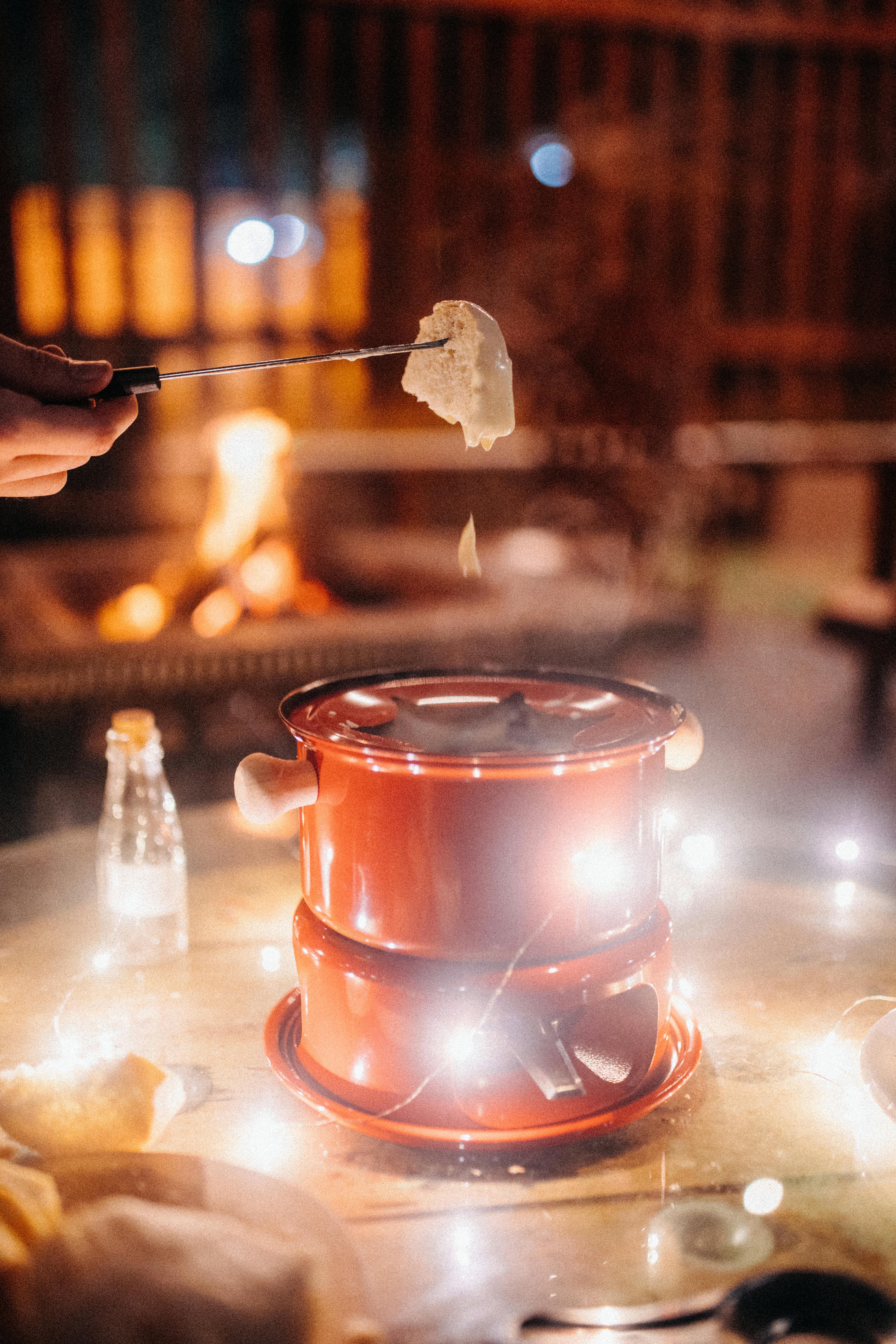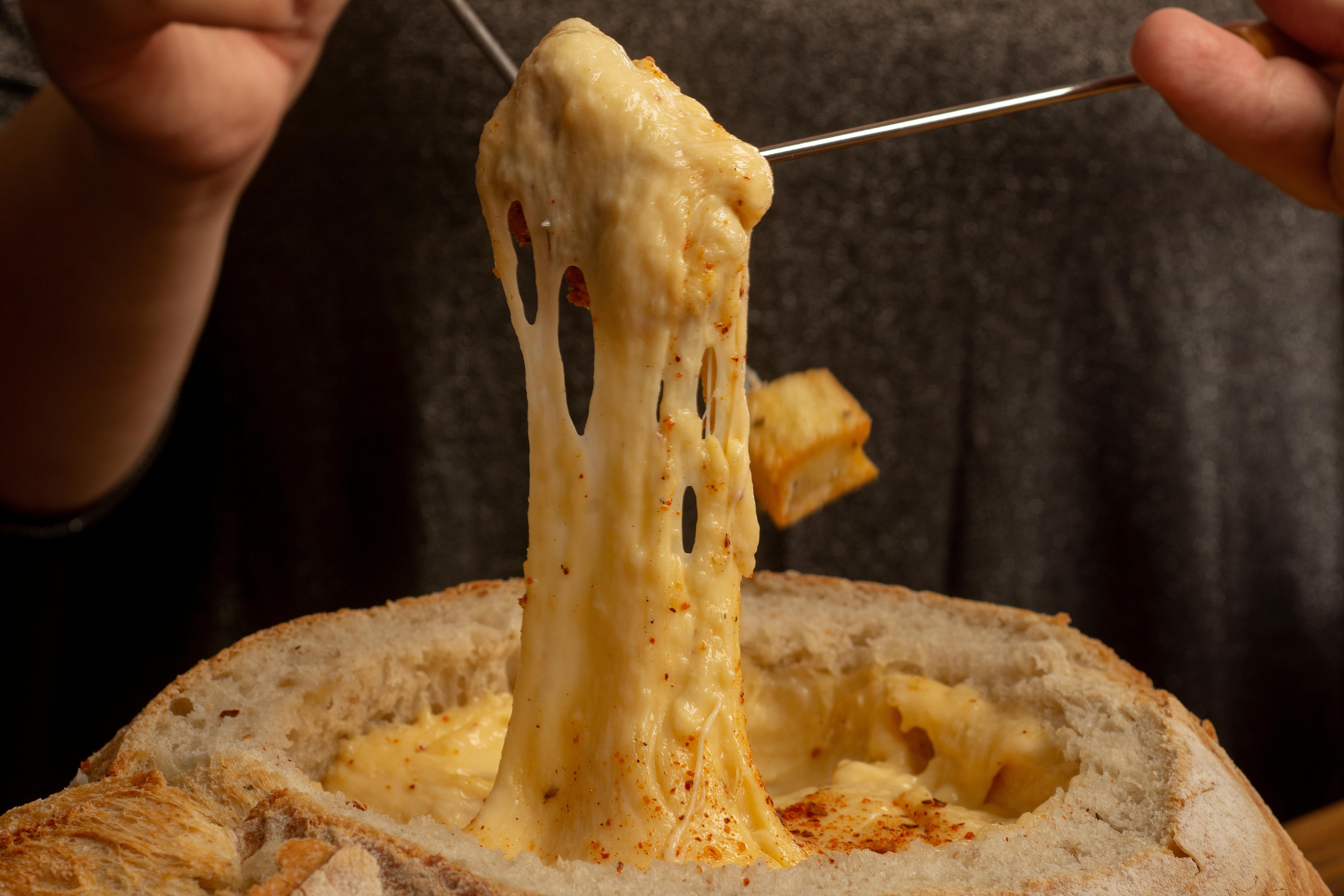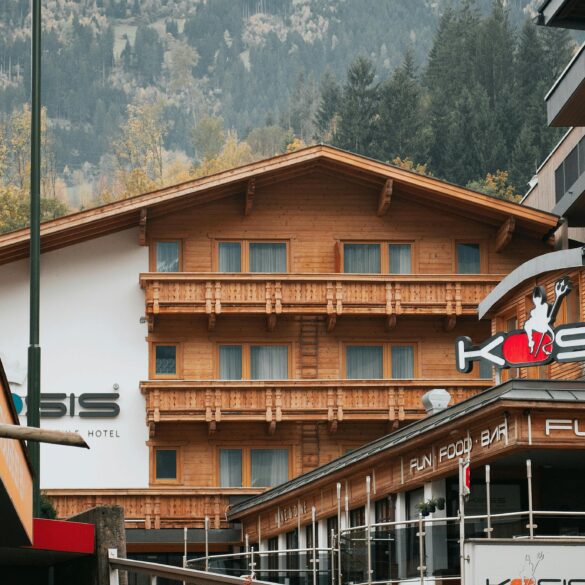Switzerland Raclette Guide: Expert Cheese Melting Tricks for Flavor Lovers
Let me be honest—there’s something magical about raclette that simply defies words. The aroma alone is enough to transport you to a snow-dusted Swiss chalet, fire crackling in the corner, and friends clustered around a table arguing, laughing, and reaching for that next glorious scrape of perfectly-melted cheese. In fact, after years of culinary exploration, both in Switzerland and in my own kitchen, I’m still uncovering nuances and insider tips that make raclette preparation a never-ending source of delight (and occasional kitchen chaos).
Before I dig into the secrets that real Swiss cheese lovers swear by, let’s check in: Are you a total raclette rookie, intimidated by the notion of melting whole wheels of cheese? Or maybe you’re a frequent host, hoping to refine your approach and impress guests who think they know the Swiss way. Either way, you’re in good hands. This guide mixes historical context, practical know-how, expert-approved melting methods, and yes, a hearty dose of trial-and-error from years spent at alpine feasts and home gatherings. Actually, let me clarify something up front: There’s no single “right way” to raclette—just a handful of proven techniques, wild preferences, and flavorful traditions that keep my culinary curiosity alive.
The Heart of Raclette: Swiss Tradition & Cheese Selection
Ever wonder why raclette is so deeply rooted in Swiss cultural life? It’s not just about cheese—it’s legacy, landscape, and a certain communal spirit. Back in the day (I mean, as early as the 13th century) shepherds in Valais would huddle over open fires, melting the local cheese against flames and scraping off gooey strands onto their potatoes and crusty bread1. To be more precise, the term “raclette” actually comes from the French verb “racler,” meaning “to scrape.” Funny thing is, I spent my first raclette night mispronouncing it (“rack-lett”? Oops—it’s “rah-klet”), and a kind Swiss grandmother set me straight, mid-scrape.
Switzerland’s Valais region is the original birthplace of raclette. The Alpine climate, high-altitude pastures, and centuries-old cheesemaking traditions have produced raclette wheels with distinctive aroma, melting characteristics, and a nutty, buttery flavor profile that’s recognized all over the world.
But here’s the crux: Not all raclette cheeses are created equal. The genuine article? It’s made from raw, full-fat cow’s milk. That lush, creamy texture comes partly from mountain grazing and Alpine herbs2. Commercial versions (often found outside Switzerland) can be milder, sometimes pasteurized, but they still deliver good melt and flavor for international home cooks. That said, I’ll be honest—I always seek out PDO (“Protected Designation of Origin”) Valais Raclette at specialty shops, and the difference? Absolutely phenomenal.
- Prioritize genuine Swiss or Valais raclette for best melt, stretch, and flavor.
- Test other Alpine cheeses, like French Savoie or Appenzeller, for interesting twists.
- Look for 4-8 week aging; younger wheels deliver creamier melt.
- Ask your cheesemonger for raw milk varieties—taste is deeper and more complex.
In my experience, the flavor difference between Swiss, French, and German raclette cheeses can be subtle yet genuinely transformative for the whole experience. Actually, the more I experiment, the more I realise (yes, “realise”—I always revert to British spelling when in Europe) that the real secret lies in the cheese’s fat content and moisture balance. Too dry? You’ll end up with sad, rubbery scraps. Too moist? Sometimes the melt gets runny, almost soupy. The sweet spot? Right in the middle—think creamy, luscious, barely holding together.
Essential Raclette Gear: What You Need for Perfect Melting
Let me step back for a moment: Prep is half the battle. Ever tried to host a raclette night with mismatched pans, a cheap grill, or cheese that simply refuses to melt? I’ve definitely made every mistake in the book (and then some), so here’s what unlocks smooth, drama-free cheese melting time and time again:
- Traditional Raclette Grill or Tabletop Machine – Honestly, the right grill is a game-changer. Swiss homes split between classic half-wheel heaters (like you’ll find at Alpine lodges) and modern tabletop electric raclette makers. Both work, but the latter is more practical for big gatherings3.
- Mini Pans (“Coupelles”) – Every guest gets their own, fostering customization and fun. These pans are non-stick, small enough for personal servings, and ideal for playful cheese artistry.
- Wooden Scrapers – Please do not use metal! I learned this the hard way—the wrong tool leaves scratches and broken pans galore.
- Serving Platters & Prep Boards – Keep accompaniments neatly organized: boiled potatoes, pickles, charcuterie, vegetables, and more (trust me, chaos erupts if you don’t).
If you’re using an open fire (the old-school shepherd way), you’ll need a long-handled scraping knife and a steady hand. That’s where things get theatrical—and a little risky, honestly, if you’re new to live flame cheese melting.
Cheese Prep: Slicing, Tempering & Secret Techniques
Back when I first started hosting raclette dinners, I underestimated just how much difference cheese prepping makes. One time, five pounds of raclette arrived at room temperature—sounds ideal, right? Actually, let me clarify: It wasn’t. Temperature swings can ruin texture; cold cheese, straight from the fridge, doesn’t melt smoothly, while overly soft cheese gets sticky and unwieldy. Here’s what works, by and large:
- Slice Cheese Thicker Than You Think – Swiss raclette wheels are typically cut into 4-5 mm slices. That’s thick enough to hold heat, melt gradually, and deliver optimal gooeyness. Anything thinner turns patchy and dries out far too quickly.
- Temper Cheese for 60-90 Minutes – Let cheese rest at room temperature (away from direct heat) for at least an hour pre-melting. The flavors round out, and the melt is infinitely smoother4.
- Remove Rind (or Don’t…) – Some purists swear by eating the rind, others categorically slice it off. What I’ve found: Washed-rind Swiss cheeses often have edible peels, while commercial varieties add wax coatings that must absolutely be removed.
- Surface Scoring – Gently scoring the cheese’s top surface (just a few shallow lines) can help the heat penetrate evenly. I used to skip this but now swear by it for faster, more uniform melting.
- Cutting slices too thin—results in patchy, crispy melt with uneven flavor.
- Melting cheese straight from the fridge—leads to rubbery or lumpy texture.
- Using wax-coated commercial cheese without removing outer layer—ends in plastic-y taste.
Honestly, what really strikes me is how much raclette preparation is about patience. Rushing cheese onto the grill seldom delivers that irresistible stretch and shine we all crave. I go back and forth on whether the “Swiss grandma technique” of slow, deliberate melting is better than the quicker electric grill—but nine times out of ten, slower is superior.
Melting Mastery: Raclette Grills, Fires, and Beyond
Now, onto the main event. How do you actually melt raclette cheese to perfection without turning it into a sad, burned mess or a limp puddle? This is where technique—and a bit of showmanship—comes in. Let me think about this for a second; there are essentially three main methods:
- Open-Fire Melting: The classic Alpine approach: Heat half a wheel near an open wood fire, scrape softened top onto potatoes. Spectacularly theatrical, but tricky for beginners5.
- Tabletop Raclette Grill: Modern, safe, ideal for families and parties. Individual pans (coupelles) allow people to customize portion and toppings. Electric grills offer even heat.
- Broiler/Oven Raclette: Not the Swiss way, but for apartment dwellers, broiling cheese over potatoes in a dish works, too.
From my perspective, tabletop electric grills provide more control, especially for large groups. I’ve witnessed seasoned hosts use open-flame setups at ski lodges that frankly left me in awe (and slightly terrified)—the aroma is deeper, the flavors are more rustic, but the margin for error is much higher.
- Start low and slow—gradual gentle heat preserves flavor and texture.
- Cover pans briefly to trap steam for a silky finish.
- Scrape cheese at peak gooeyness, not when it starts bubbling or browning heavily.
- Wipe pan between rounds for cleaner, more appealing melted cheese.
Oh, and here’s another thing—Swiss hosts love to debate cheese melting technique. Some swear by placing potatoes directly under grilling pans (“potato steam improves the melt!”). Others argue for the importance of never deviating from centuries-old wood fire methods. Personally, I’m partial to the customization of tabletop grills: Guests mix and match cheese, veggies, and cured meats—a sort of edible collage that changes every round.
Featured Snippet: Step-by-Step Raclette Melting Process
- Arrange sliced, tempered raclette cheese in mini pans.
- Place pans under grill or near open flame.
- Monitor cheese for a silky melt, scraping onto boiled potatoes at the peak gooey moment.
- Repeat with fresh accompaniments; wipe pans between rounds for best results.

The Full Raclette Experience: Accompaniments & Social Rituals
What’s left out too often in online guides—and I’ll be completely honest, this is what gets me passionate—is the side dishes and the ritual. Raclette is communal food, not just melty cheese. A true Swiss raclette night is a layered experience built around simple, flavorful accompaniments:
| Classic Accompaniment | Flavor Impact | Serving Tip | Swiss Regional Variation |
|---|---|---|---|
| Boiled Potatoes | Earthy, mild; absorbs cheese perfectly | Keep skins on for rustic texture | Valais, Bern, everywhere |
| Cornichons & Pickled Onions | Bright, acidic; balances richness | Serve ice-cold on platter | Country-wide |
| Cured Meats (Jambon cru, Viande des Grisons) | Salty, savory contrast | Thinly sliced, draped alongside cheese | Valais, Graubünden |
| Fresh Veggies (Mushrooms, Peppers) | Adds crunch & color | Sauté lightly or grill separately | Modern adaptation |
Here’s what I’ve learned from hosting dozens of raclette parties with folks from Zürich to Lausanne: The side dishes are more than mere support act—they’re palate cleansers, color bursts, and culinary conversation starters. I remember my first visit to a farmhouse in Vaud where a host insisted we try raclette with steamed leeks and black pepper. The fusion? Bonkers, in the best possible way.
- Serve drinks that cut richness (think dry white wine, herbal teas, or bubbly water).
- Set individual pans and scrapers at each place setting—the Swiss take customization seriously.
- Rotate responsibilities (“scraper,” “veggie wrangler,” “potato wrangler”) to keep everyone involved.
- Finish with fruit (apple slices, pears)—perfect for refreshing your palate as the feast winds down.
I need to revise my earlier point about accompaniments: There’s no set rule that potatoes and pickles are a must, but in my experience, omitting them is practically heresy in a Swiss home. Some families even sneak in fresh pineapple or spicy chili—a controversial trend that makes every round a surprise (and puts the Swiss purists on edge).
Advanced Cheese Melting Tips & Troubleshooting
Okay, let’s step back and get practical. What do you do when the cheese refuses to play along? After years of meltdowns (literal and metaphorical), these troubleshooting tactics have saved the day more times than I can count:
- If cheese splits or gets oily: Temper slower, raise heat in smaller increments. Excess surface fat means the cheese was too cold initially.
- Uneven melt: Score the surface or rotate pans halfway through. Open-flame melting benefits from wheel rotation—this puzzled me until a local cheesemaker explained the technique.
- Tough rind: Remove more of the exterior or use older cheese slices for “scrape, not eat.”
- Dry finish: Add a drop of white wine or a tinier potato chunk under the cheese—it steams the pan and rehydrates the melt.
The more I consider this, the more I marvel at how even expert hosts encounter raclette glitches. The key? Don’t panic. Tease out small adjustments, trust your senses, and—odd as this sounds—sometimes letting cheese sit for an extra thirty seconds resolves everything. I used to rush every pan; now I pause, watch for subtle surface shine, and only scrape when the texture turns silkier than satin.
Featured Table: Raclette Cheese Troubleshooting
| Problem | Likely Cause | Pro Solution |
|---|---|---|
| Cheese splits into oil & solids | Overheating; cold cheese | Lower heat, temper cheese longer |
| Rubbery, tough texture | Sliced too thin or cold | Slice thicker, bring cheese to room temp |
| Uneven melt | Heat not distributed evenly | Score cheese, rotate pans or wheel |
| Dry, crumbly finish | Too much direct heat; lack of moisture | Add tiny potato or wine under cheese |
Where do I even start with pairing Swiss wine? A crisp Fendant from Valais is classic, but dry Riesling or Sauvignon Blanc work, too. For non-alcoholic options, herbal teas (like Alpine mint) bring out cheese aroma without heaviness. Anyone else find soft drinks clash? I go back and forth on that, but usually stick with water or tea.
Swiss Raclette Culture: Stories, Customs, & Etiquette
Swiss raclette isn’t simply about the cheese—it’s stories, traditions, and a certain proud protectiveness over communal food rituals. When I first attended a village raclette festival, I was struck by how passionately people debated the “perfect scrape,” how table jokes flowed, how food linked generations.
Interestingly enough, Swiss etiquette around raclette is deeply shaped by centuries of communal meals. Passing the cheese, waiting your turn to scrape, never double-dipping your scraper—these customs have evolved from practical necessity into nuanced social codes7. My generation remembers when conversation at raclette tables focused on ski conditions; younger hosts now riff on cheese trends and Instagram-worthy melts.
As we head into winter, I’m reminded that raclette’s role stretches past celebration. During long evenings in mountain villages, raclette feasts bring families together to share stories, traditional songs, and the occasional (heated) debate about the best way to cut potatoes. At the same time, Swiss gatherings are increasingly international; nowadays, a raclette table in Zurich might feature everything from kimchi to vegan cheese options.
On second thought, it’s the adaptability and community that sets Swiss raclette apart. Every region, family, and host injects unique flair—different toppings, drinks, games, and post-feast strolls. From my experience, inviting neighbors to contribute side dishes (local pickles, homemade bread, garden veggies) makes the whole feast richer, tastier, and way, way more fun.
Frequently Asked Questions
- Can I use non-Swiss cheese for raclette? Absolutely! French, German, and even American Alpine-style cheeses work—though authentic Swiss raclette guarantees the traditional flavor and melt.
- Is raclette gluten-free? Yes—cheese is naturally gluten free, and traditional accompaniments (potatoes, pickles, veggies, cured meats) are safe for gluten-sensitive guests.
- How much cheese should I plan per person? Plan on 200-250g (7-9 oz) per person. (More for cheese fanatics—trust me, I’ve hosted tables where we ran out before dessert!)
- Can vegetarians enjoy raclette? Definitely! The cheese, potatoes, veggies, pickles, and fruit form a delicious, satisfying meal without cured meats.
References & Further Reading
References
Gather your friends, source the best cheese, and don’t stress about perfection. Trust your taste, experiment boldly, and embrace those small mistakes as proof you’re doing raclette the authentic Swiss way. Take a photo, share your creation, and get ready for laughter, flavor, and a table brimming with memories.
What a difference one night can make.



